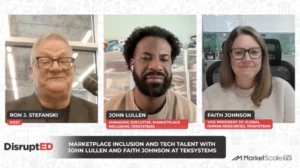Are Retail Executives Fooling Themselves about Omni-channel?
If you were watching the retail and omnichannel debates carefully, you would have noticed an interesting discord in the veins of research in 2017. One vein published by Boston Research Partners claimed that 63% of American retailers offer BOPUS (Buy Online PickUp in-Store). A second vein published by OrderDynamics showed that only 29.1% of US Retailers ‘actively’ offer BOPIS (Buy Online Pickup In-Store) today. The first vein asked retail executives about whether their chains offer omni-channel services. Vein two took a customer’s journey observing whether an online order could be picked up in-store (was click and collect offered during a purchase)? But why such a large disconnect in the research?
Why the disconnect?
Core to the disconnect is the research methods used. The first vein is a survey of retail executives and their responses. The second vein took an actual shoppers’ perspective by attempting to order a product directly from the retailers to test current services. Yet, this is still disconcerting. It means that retail executives are either fibbing, in the process of rolling out omnichannel capabilities, or something else is going on.
Fibbing
When answering a survey, it is easy to fib. As a retail executive, it could that questions about omnichannel retail hits a sensitive nerve. Everyone in retail is talking about it. It is the key buzz-word. And, if one of your teams is considering the strategy and how to get started… in a way, the omnichannel project is underway. So, we are good, right?
Rollout
Presuming that most executives are neither fibbing nor deluding themselves, maybe it is a work-in-progress. This probably accounts for a portion of the gap. Although we have deployed an OMS (order management systems) in as few as 10 weeks, retail technology vendors can take up to 24 months (104 weeks). The OMS is the core component needed to offer BOPIS / in-store pickup capabilities.
Something Else
Gabriele Oettingen’s research on “Rethinking Positive Thinking” may offer a piece to this puzzle. Oettingen writes about how in many cases visualizing a positive outcome of a project fools our minds. Sometimes the mind perceives the imagined future as a reality, which takes away some of the drive to achieve the goal or follow the difficult task through to its full completion.
Making omnichannel retail an operational reality is difficult. There are many rewards to achieving it, but if it were easy then every retailer would have it operating today. This is clearly not the case.
While deploying technologies like order management systems, it is possible to deploy key functions like order routing, without deploying the complete omnichannel solution. Don’t misunderstand. Intelligent order routing is an important technology that dramatically improves the efficiency of a retailer’s fulfillment, and removes significant costs from their operations. However, it isn’t the full omni-channel story.
There is little doubt that an important piece of this mystery, is that many merchants have deployed key retail technologies, but are still on the way to offering BOPIS.
What’s Next?
The disconnect between what retail executives perceive their organizations are offering shoppers, and the actual existing services – is an interesting case. Retail is a hypercompetitive business. Executives are super busy and stressed about keeping all the balls in the air in their daily juggling acts. Getting omni-channel retail up and running, is also not an easy task. It all makes sense. It is easy to understand why there is a gap between what merchants think they are offering and customers experiences.
Now that we understand the disconnect, look at your business through the eyes of your customer. Then truthfully ask whether your teams have brought the task to completion on the click & collect (in-store pickup) front. If not, regroup, re-imagine the next steps, and push on to get it done. In a hypercompetitive industry like retail, the customer won’t be fooled.









